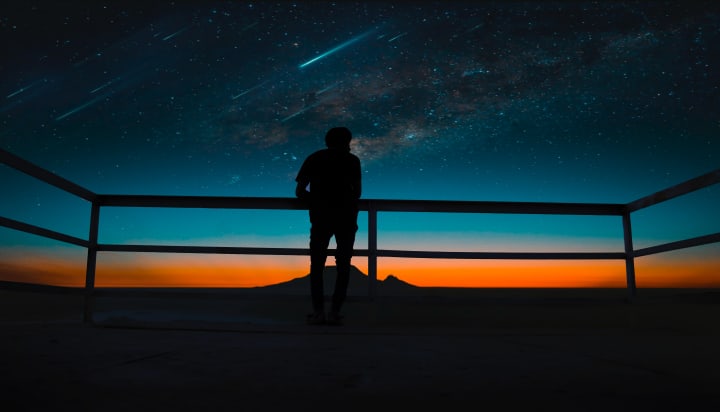The Grand Symphony of the Universe: Embracing the Big Bang
Embracing the Cosmic Overture: A Philosophical Exploration of the Big Bang

Have you ever gazed up at the night sky, marveling at the twinkling stars and contemplating the vastness of the cosmos? The universe is a stage of cosmic wonders, and at the heart of its breathtaking performance lies the captivating concept of the Big Bang. As we explore this monumental scientific theory, let us embark on a philosophical journey to embrace the grand symphony of the universe and the birth of our reality.
The Big Bang theory, a masterpiece of modern cosmology, paints a vivid picture of our universe's origins. It tells the tale of a momentous event, approximately 13.8 billion years ago, when all that exists today emerged from an unfathomably small, dense singularity. The rapid expansion that followed led to the birth of space, time, and matter - an awe-inspiring spectacle that set the cosmic stage for the grandest show ever witnessed.
In the symphony of creation, the prelude begins with the singularity - a realm of mystery and curiosity. As we ponder what existed before the Big Bang, we find ourselves at the edge of human comprehension, where the very laws of physics reach their limits. Yet, this enigma fuels our thirst for knowledge, encouraging us to delve deeper into the secrets of existence.
As the grand performance unfolds, we witness the crescendo of expansion. The universe experiences an inflationary surge, stretching its fabric to a colossal scale. The magnificent harmony of this rapid growth smoothens the rough edges, laying the foundation for the cosmic masterpiece to come.
Enter the era of matter, where protons, neutrons, and electrons join the celestial symphony. Through nuclear reactions, the first light elements are born, painting the canvas with hydrogen, helium, and traces of lithium. This celestial painting mirrors the elemental building blocks that sustain the universe's dance of life.
The symphony's most captivating melody emerges in the form of the cosmic microwave background (CMB) radiation. At a cosmic age of about 380,000 years, the universe cools sufficiently for atoms to form, allowing photons to travel freely through space. This radiant echo of the early universe is a mesmerizing testament to its birth.

As the composition progresses, the universe's masterstroke reveals itself - dark matter and dark energy. These enigmatic forces, hidden from direct view, cast an undeniable influence on the cosmic choreography. Dark matter's gravitational pull orchestrates the cosmic ballet of galaxies, while dark energy conducts the symphony's accelerating tempo, driving the universe apart.
Amidst this celestial orchestration, the universe continues its grand performance, with galaxies dancing away from each other in an ongoing cosmic waltz. The phenomenon of cosmological redshift serenades us with evidence of the universe's expansion, harmonizing our understanding of its majestic evolution.
The symphony of the universe remains a testament to the wonders of science and the human spirit of exploration. As we embrace the Big Bang theory, we find ourselves on an everlasting quest to understand the grand design of our existence. Just as the cosmos stretches beyond the furthest reaches of our telescopes, so too does our thirst for knowledge extend beyond the limits of our understanding.
So, let us continue to gaze upon the stars with wonder, savoring the cosmic melody that surrounds us. As we witness the grand symphony of the universe, we become attuned to the profound beauty and mystery of creation, forever humbled by our place in this cosmic opera.
About the Creator
Cafer AKTAY
Passionate blog writer with a love for words and a curiosity to explore diverse topics. I aim to engage, inspire, and offer fresh perspectives on various subjects. Let's embark on this literary journey together! 📚✍️
Enjoyed the story? Support the Creator.
Subscribe for free to receive all their stories in your feed. You could also pledge your support or give them a one-off tip, letting them know you appreciate their work.






Comments
There are no comments for this story
Be the first to respond and start the conversation.